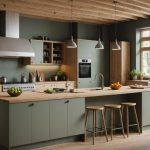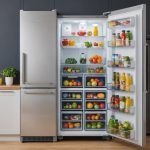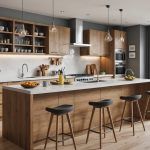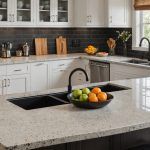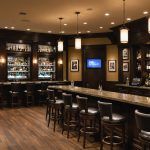Importance of Bar Layout Design
Bar layout design plays a pivotal role in ensuring operational efficiency and elevating customer satisfaction. A well-thought-out layout directly impacts service speed and the overall operational flow, making workflow smoother for staff. When the physical arrangement of the bar is optimized, it minimizes steps and distractions, allowing bartenders to serve customers more quickly and efficiently.
Moreover, a strategic design maximizes the customer experience by enhancing comfort and ambiance. Thoughtful placement of seating and service areas allows patrons to enjoy a welcoming and engaging environment. Successful bar layouts are crafted with customer interaction in mind, often influencing the time and money customers are willing to spend.
In the same genre : Creating a Welcoming Atmosphere: Innovative Live Music Strategies to Elevate Your Bar Experience
Several case studies highlight the benefits of meticulous bar layout design. An analysis of celebrated bars shows that layouts which prioritize easy movement and visibility significantly boost customer retention and operational success. The atmosphere, enhanced by seamless movement and strategic seating, plays an essential role in making the bar inviting and efficient.
In conclusion, a well-designed bar layout is crucial not just for the staff’s operational flow but also for enhancing the customer’s overall experience, leading to an increase in satisfaction and loyalty.
Also to see : Mastering Café Design: Creating a Functional and Aesthetically Pleasing Space
Key Principles of Effective Bar Design
Bar design principles are fundamental in creating spaces that cater to both space optimization and an efficient workflow. Understanding how to balance aesthetics with functionality is crucial in this context.
Understanding the Customer Journey
The customer’s journey within a bar should feel intuitive and seamless. Design must prioritize clear pathways and accessibility to enhance the visit. This requires planning the bar’s spatial layout, ensuring patrons can easily navigate the room. Creative furniture arrangement and strategically placing service stations contribute to a more pleasant customer experience. Incorporating multi-functional furniture can effectively save space, accommodating the needs of different customer groups.
Optimizing Staff Workflow
Efficient workflow for staff within a bar is essential for smooth operations. By organizing the workspace carefully, bars can ensure quick and efficient service. Proper placement of bar tools and supplies, as well as designing specific areas for different tasks, are pivotal in workflow optimization. Staff should be able to move around easily, facilitating quick service, and minimizing fatigue during busy hours.
Balancing Aesthetics and Functionality
Striking a balance between aesthetics and functionality ensures that a bar is as visually appealing as it is serviceable. Utilizing creative lighting and color schemes can set the mood, while maintaining practical considerations like visibility and durability of materials. By focusing on these design principles, bars can offer both an attractive atmosphere and a highly efficient working environment.
Strategies for Maximizing Space in Bars
Maximizing space in bars is crucial for both operation and client satisfaction. An effective space maximization strategy includes utilizing vertical space. By mounting shelves or racks upward, bars can store additional items without affecting the primary workflow area. Think overhead racks for glassware or wall-mounted wine displays. This approach clears valuable counter space, boosting operational efficiency.
Innovative storage solutions also play a vital role in reducing clutter. Incorporating under-counter refrigeration units or movable storage carts can help maintain a tidy environment while keeping essential tools accessible. Thoughtfully incorporated pull-out drawers and modular shelving can further organize supplies neatly.
Flexible layout designs are increasingly important for accommodating different events. Modular or reconfigurable furniture allows for quick rearrangement, transforming intimate seating into open spaces for larger gatherings. Moveable partitions can create private sections or be removed for a spacious setting.
In practice, these strategies ensure a bar remains adaptable, meeting diverse needs without sacrificing functionality. Whether hosting a casual night or a bustling event, maximizing space effectively is synonymous with versatile and efficient bar operation.
Enhancing Service Speed through Layout
Improving service speed in bars is crucial for maintaining customer satisfaction and optimizing bar operations. Efficient layouts play a significant role by streamlining workflows for better performance.
Designing Efficient Service Stations
Service stations should be designed strategically to ensure swift service. Placing critical items like mixers and glassware within easy reach minimises unnecessary movement. This layout optimizes efficient workflow, reducing wait times and enhancing the overall customer experience.
Streamlining Order Processes
Order processes can be streamlined by organizing bar stations logically. Assigning specific areas for tasks such as drink preparation or payment can eliminate bottlenecks. Well-thought-out spatial arrangements ensure that the operational flow is uninterrupted, increasing the speed and accuracy of service.
Technology Integration for Faster Service
Integrating technology into the layout can significantly boost service efficiency. Systems like electronic ordering and payment apps reduce processing times. This technological advancement requires staff training to ensure competent use, benefiting both customers and operations. Adjusting the layout to cater to peak hours, with additional stations or mobile bartending setups, further enhances speed.
Having a layout that supports a fast-paced environment is essential for meeting customer demands and sustaining business growth in the competitive bar industry. Implementing these strategies not only improves speed but also enhances the overall bar experience for patrons.
Trends in Bar Layout and Design
Staying up-to-date with bar design trends is crucial for maintaining competitiveness and appealing to modern customer preferences. Recent developments in the industry emphasize the integration of contemporary design elements that focus on both aesthetics and functionality.
Exploration of Contemporary Design Trends
One major trend is the incorporation of open and inviting spaces that encourage customer interaction. This is reflected in the use of expansive seating areas and communal tables that foster a sense of community. Additionally, incorporating natural elements, such as wood and greenery, contributes to an atmosphere that patrons find relaxing and appealing.
Incorporating Sustainable Practices
Sustainability has become a pivotal aspect of modern design, with bars integrating eco-friendly materials and technology. From using recycled materials in furnishings to implementing energy-efficient lighting systems, these practices reduce environmental impact while showcasing a commitment to responsible business practices.
Customer-Centered Designs
More than ever, customer preferences are shaping layout strategies. Designs that prioritize accessibility and comfort, offering diverse seating options and intuitive navigation, can significantly enhance the patron experience. As a result, customer-centered designs have become a cornerstone of successful bar layouts, accommodating various customer needs and preferences while ensuring operational efficiency.
Case Studies of Successful Bar Layouts
Examining bar layout examples offers valuable insights into the relationship between design and success. Real-world applications of layout principles demonstrate how thoughtful planning can enhance both operational and customer satisfaction metrics.
Analysis of Well-Designed Bars
Renowned bars serve as design success stories that spotlight the importance of layout. These establishments feature open spaces that facilitate ease of movement and strategically placed service stations that optimize service time. Moreover, cleverly integrated storage solutions clear clutter and allow for a streamlined service experience, setting industry benchmarks.
Lessons Learned from Layout Failures
Not all designs succeed, and evaluating failures provides critical lessons. Common issues include inefficient space utilization and the lack of a clear service pathway. Poorly planned designs can lead to congestion, impacting customer experience and service speed negatively. These observations underscore the importance of data-driven decisions to refine layout strategies.
Real-World Applications of Layout Principles
Successful layouts incorporate key takeaways such as multi-functional furniture and decor that complement functional goals. These bars successfully balance customer comfort with seamless operational flow. The contrast between effective and ineffective layouts highlights the critical role that careful design and foresight play in a bar’s success, offering a blueprint for others to follow.



